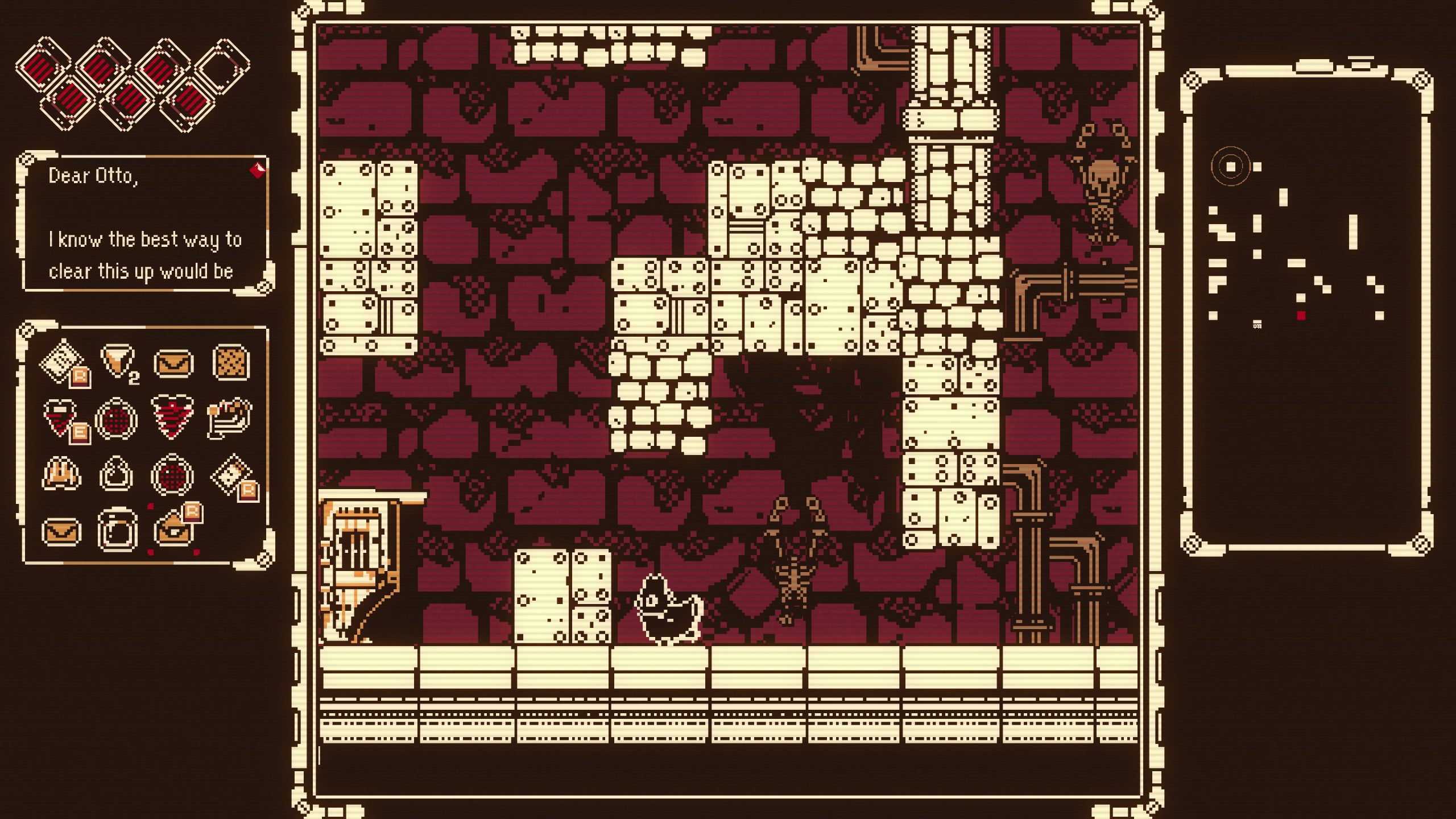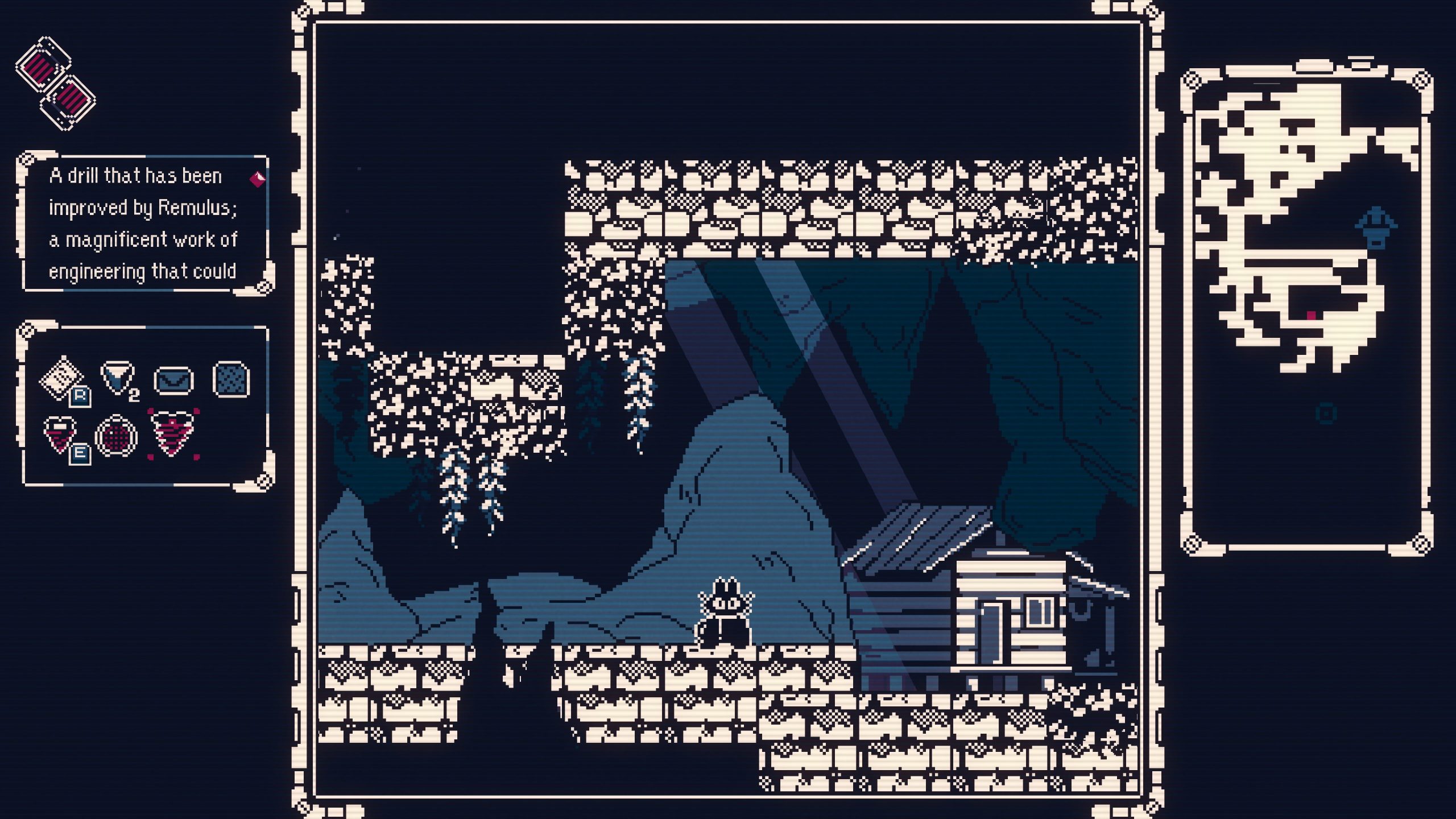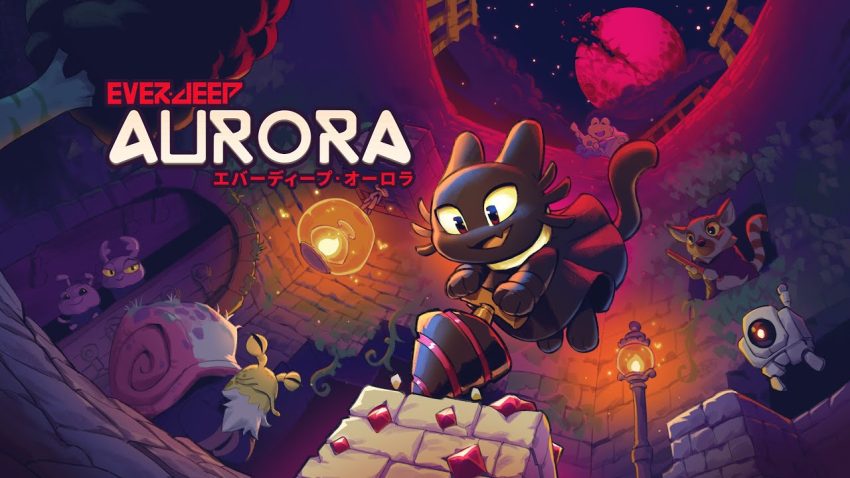Everdeep Aurora is a charming, 16-bit-inspired exploration-based platformer with some nagging flaws that keep it from classic status.
What is Everdeep Aurora?
Everdeep Aurora is a game about going deeper. Shell, the game’s main character, is a little black cat whose mother has disappeared. It’s up to you to go underground to find her. Well… further underground, as the population of the game world was forced to live underground after an apocalyptic meteor shower.
You start at the surface and make your way down, digging a path with your primary tool: a drill. Throughout the game’s four to six-hour playtime (for the standard ending), you’ll make new friends, deliver objects between different folks underground, play some mini-games and get one step closer to your mother with every passing friendship made. Through the environment, there were smaller sub-areas to explore, and some of the mini-games were pretty fun to play (including a dice game and hide and seek). The core loop of the game is simple and works.
I was excited about this game after attending a great demo at PAX West 2024, where I awarded Everdeep Aurora my Game of the Show award. The sheer verticality of the map is impressive, and the world’s visual identity slowly shifts as you make your way deeper. I was concerned that everything might look a little the same: just structures and rocks. However, from Gothic motives to mechanical areas, there’s a nice amount of variety to the map. The game’s publisher, Ysbryd Games, continues to discover games with a powerful aesthetic across a wide range of genres.

Everdeep Aurora’s style
The game’s strongest attribute is its style. The graphics are oozing with personality. The whimsical 16-bit graphics are very reminiscent of some of my favourite titles on the Game Boy Color.
A significant amount of work has been put into the character designs. The UI reinforces the 16-bit feel. Your screen is divided into distinct sections, where the main gameplay takes place in a 1:1 window, with a few key windows surrounding the main gameplay area. On the left-hand side, you’ll find your inventory, along with an information panel. On the right side, you’ll find a map.
Shell has many minor quirks with their character model, and some of the NPCs that you meet on your adventure are wildly distinct and might have you smirking as you see them bob around in the underground. The little movements of the objects in the world also make it feel alive – whether it’s a small lantern or a steam-powered device, everything has life. In addition to the in-game elements, there are also a few key moments in the game where brief vignettes are used to convey a meaningful relationship or action. These moments were also charming.

Get Lost
My biggest complaint, however, is the lack of direction that I often felt.
Since the game’s map is pretty open (although not very wide), I would have expected some guidance on what comes next. A quest log, an objective marker, a journal, or clear and consistent waypoints – Everdeep Aurora doesn’t have any of them. This, combined with the fact that much of the game’s geometry between major landmarks looks very similar, led me to feel aimlessly wandering, trying to find the next step on my journey at several points. This included a long stretch right at the end of the game. The map on the right-hand side of the UI is aesthetically pleasing but not very useful. It shows a series of occasional pings, but those were still somewhat confusing to me after I finished the game. I just didn’t know what they were drawing my attention to. The wandering was worsened by the fact that paths that you drilled through the levels would reset if you quit the game and came back in, meaning that you couldn’t retrace your steps through your old paths.

Jagged Edges
Beyond the issues that I had with figuring out what’s next, the game also had a ton of other small rough edges. The game’s camera moved quite abruptly when you moved in a somewhat unpredictable way. It tended to “jerk down” slightly when you drilled. I also found that it didn’t move fast enough to track your character when you fell more than one screen’s depth. Additionally, some additional jump mechanics are added to the experience over time, but I found that they weren’t satisfying to use (a wall jump and a double jump). To make matters worse, the double jump doesn’t teach itself very well.
The inventory on the left-hand side of your UI required way too much fiddling. You can access it at any time, but you can only swap items using the left and right arrow buttons on the D-pad. By the end of the game, your character had about 20 different items to fiddle with. To make things worse, some of them were pockets filled with other items. Some were inconsequential once you used them, like your key pocket, but there was a folder pocket with information about characters and the world that I had to refer to more than once.
You Know the Drill
I also question why the game added a power meter to your use of the drill. You have to collect crystals in the world to refill your drill. Crystals are abundant, but you need to use a machine in the world to refill them. These machines are somewhat limited, and your drill can run out of power quickly if used consistently. You can still use your drill when it’s out of juice, but with a power penalty, meaning it just takes longer to get through the rocks when you’ve run out. It seemed unnecessary. There are also minor technical hiccups here as well; when moving back and forth between different vertical zones, the music changes to reflect the new locale, but if you’re jumping up and down at the threshold of these zones – let’s say to dig a hole in the rock – the music will abruptly switch back and forth between different tracks.

End Game
I mentioned the issue of getting lost in the final hour of the game, but the ending is also pretty weak. You move away from the more natural environment into one more focused on technology that gets away from the charming whimsy that you’ll experience in most of the game. The final puzzle that gets you to the end game was confusing, and I guessed my way through it. The final sequence of the game seemed inconsequential, and I almost missed it. I did not seek out additional endings after my playthrough.
All in all, Everdeep has a strong visual style, but its simple loop suffers from some rough edges. I wanted to love Everdeep Aurora. It has the heart of a classic, but its charm alone couldn’t carry it there.
Final Score: 7/10
The publisher provided a copy of the game for this feature. Reviewed on PC.
Looking for another game oozing with style like this one? Check out our review of SCHiM!

Jacob is a creator marketing professional, and a fan of video games. He hosts/produces the Left Behind Game Club and is a co-host of Crossplay Conversations. At conventions and bars, he also hosts Video Game Trivia.

